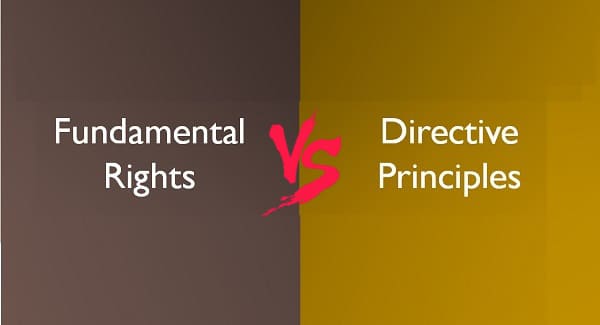Have you ever wondered what is the difference between fundamental rights and directive principles? Are you juggling to find the difference between the two? This article will answer all your doubts.
Let us discuss the basis of fundamental rights and directive principles of the government to ensure a better understanding of the content. The fundamental rights are required to ensure democracy and its practices followed thoroughly by the elected government. The Right to vote is considered as the heart and soul of democracy. They have imbibed from the different parts of the world.
The freedom movement of India
It took more than a decade, to get rid of the three-decades-long slavery from the British. The freedom of India is achieved with the immense struggle of freedom fighters. Thousands of people shed their blood to achieve the cause. We should be immensely thankful to them.
“Freedom is my birthright and I shall have it”. Lokmanya Tilak
Many great Indian leaders aroused the sense of self-esteem in the common man and then this great task was achieved. We can only imagine the ordeal, which the freedom fighters had faced. But we can pay our respect to them by keeping our nation corruption free and working selflessly for the welfare of society.
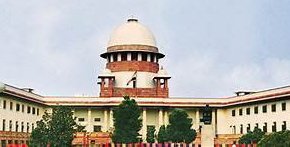
Constitution of India
The Constitution of a country is the system of fundamental principles according to which a nation, state, corporation is governed. The Constitution of India is inspired by the British and United States Constitution. Our leaders wanted to make our country a Democratic country, therefore they took inspiration from democratic countries for preparing a draft of the Indian Constitution.
A Constitution is essential because it is an important law of the land. It determines the relationship of the citizens with the governments. It lays down principles and protocols which are required for people belonging to different ethnic and religious groups to live in harmony. The constitution is of many types. Different countries of the world practice different constitutions. In India, we have the Republican Constitution.
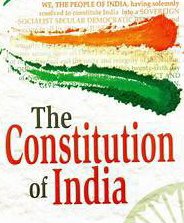
On 26 January 1950, our Constitution came in effect. It is well known that Dr. B R Ambedkar drafted and framed our Constitution. He is better known as the father of our Constitution. A committee of more than 200 people worked diligently to make a detailed and well-drafted Constitution. The Constitution replaced the government of India Act 1935 and became the Republic of India.
Fundamental Rights of the people
The fundamental rights are the basic rights given to its citizens by the Constitution which cannot be violated by any person or institution. They ensure the. they are applied without any discrimination on basis of caste, race, religion gender, etc. They are enforceable, with some exceptions. The fundamental rights are
- Right to equality
- Right to freedom
- Right against exploitation
- Right to freedom of religion
- Cultural and educational rights
- Right to constitutional remedies. The right to property was also a fundamental right in the past. It is now a legal right and not a fundamental right.
The right to equality provides equal rights to the citizen irrespective of caste, creed, religion, or gender. They come under Article 14-18. No one can discriminate among two individuals. It is very important in India, as we had the caste system in which people were treated differently according to their caste. The lowest class was even treated as untouchables. However, there are many people today in India who are fighting for the Right to Equality. In the remote villages, people are still unaware of their rights and duties provided by the Constitution. Lack of information and communication is mainly responsible for the ignorance of people.
The right to freedom is a bundle if many rights such as freedom of speech, freedom of expression, freedom to reside in any part of the country, freedom of practicing any profession, etc. They are provided under Article 19-22. The scope of the Right to independence has expanded greatly since independence.
Also Read: Difference between mixed cropping and intercropping
The Fundamental Rights embedded in our constitution are the source of all rights, based on this, the Government of India enacted several laws e.g. −
- Right to information,
- Right to freedom of the press, and
- Right to education.
This right implies the prohibition of human trafficking, forced beggary, and other forms of forced labor. It also implies the prohibition of children in factories, etc. The Constitution prohibits the employment of children under 14 years in hazardous conditions. They have the right to compulsory education. They can study in government schools for free or with nominal fees. There are institutions like Aanganwadii for smaller children. The government provides food and basic education to the children enrolled in Anganwadi. These are provided under Article 23-24.
The right to freedom of religion means any citizen is free to practice the religion of their choice. They can practice and propagate any religion. However, the state has no religion. Every person is free to practice their faith and set up religious beliefs and institutions. These are provided under Article 25-28.
Right to protect linguistics, religion, and cultural rights of minorities by facilitating them to preserve their culture and heritage. They are provided under Article 29-30
The right to constitutional remedies is provided under Article 32-35. These rights protect their fundamental rights. If the fundamental rights of a person are violated, what measures one can take to gain back fundamental rights is provided under this section. A person can approach directly to the Supreme Court in such a case, without approaching the High Court. However one has to explain not approaching the High court first.
There are five writs provided to the citizens of India to ensure the protection of fundamental rights. These are Habeas Corpus, Mandamus, Writ of Prohibition, Certiorari and Quo Warronto. These writs help in the protection of the fundamental rights of the individual.
Fundamental rights are not ordinary legal rights. However, they are not absolute rights as they can be suspended in some situations. For example, recently the whole country was locked down due to the corona pandemic, and the right to freedom of citizens was suspended for some time. Fundamental rights can be amended only by a constitutional amendment by the Parliament. Fundamental rights can be restricted in the area which is placed under military rule. This happens to be the situation in Kashmir most of the time.
Directive principles for the state policy
Directive Principles of State policy are the instruments of instruction which directs the government to frame policies, rules, and regulations for the social and economic wellbeing of the citizens. When the lawmakers created the Constitution, they also formulated guidelines for the future political parties and lawmakers, so that a clear understanding should be there for them, orienting their minds in a proper direction.
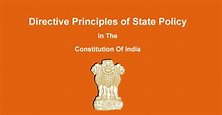
The Directive Principles are contained in Part IV (Article 37- 51) of the Constitution of India. The principles have been inspired by the directive principles of the Constitution of Ireland which is related to social, economic, legal, and administrative matters. Directive Principles are classified under the following categories: Gandhian, economic and socialistic, political and administrative, justice and legal, environmental, protection of monuments and peace and security.
At the time of Independence, there were a lot of problems that required immediate concern like there was social and economic inequality, lack of funds for running the newly made people’s Republic. So the lawmaker made these policies but they were not made legally enforceable.
Dr. Bhimrao Ambedkar who was in charge of the drafting committee of the Constitution had the foresight that the challenges of the future could be different than those we are facing. Thus, there should be flexibility and they should not be imposed on the future governments.
But, then the question aroused as to why the further governments will follow these directive principles as they are not enforced on them. Dr. Ambedkar put forward an argument for the directive principles that although these principles are not enforceable, they have the political sanction. If the further elected parties want to be reelected, they have to make policies for ensuring the financial and economic development of the country through these Directive Principles.
An example is The Mahatma Gandhi National Rural Employment Guarantee Act 2005 (MANEREGA) scheme of the Congress party. When it was elected as a ruling party they made this scheme for ensuring jobs to daily workers. By this scheme, 100 days guaranteed job was given to daily wagers.
Directive Principles of State Policy aim to create social and economic conditions under which the citizens can lead a good life. They also aim to establish social and economic welfare. Though the Directive Principles are non-justiciable rights of the people but fundamental in the administration of the country, it shall be the duty of the State to apply these principles in making laws as per Article 37. Article 37 states that state and union governments shall make further detailed policies and laws for implementation considering Directive principles as a fundamental policy. In contrary to Article 37, many policies have been implemented by state and union governments which go against the directive principles such as using intoxicating drinks as a source of major tax revenue instead of implementing the prohibition on them for better health of people, separation of judiciary from the executive, uniform civil code for the citizen, etc.
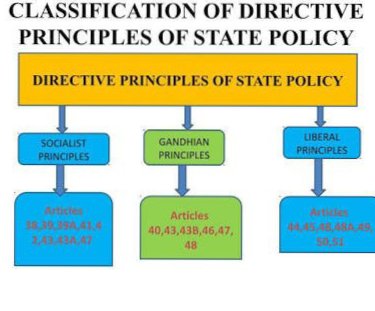
The Constitution of India classified the Directive Principles of State Policy for better understanding and based on content and direction. They can be classified into three categories: Socialistic Principles, Gandhian Principles, and Liberal-Intellectual Principles
Difference between fundamental rights and directive principles for the state policy
1. They are adopted from different places.
The fundamental rights are adopted by the Constitution of England’s bill of rights, the United States bill of rights, and France bill of rights. The Directive Principles are adopted from the Directive Principles of Ireland.
2. They are applicable to different domains.
Fundamental rights are for the people and Directive Principles are for the government. Fundamental rights ascertain the political democracy of the country. They establish the idea of the government of the people and by the people and for the people. The directive principles set the social and economic democracy of its people.
3. Nature of benefits provided is different.
The fundamental rights provide individual welfare whereas Directive Principles ensure the welfare of society as a whole The fundamental rights ensure that an individual is living peacefully with all the resources he is entitled to, as a citizen of the country. The Directive Principles work for the welfare of themselves and the community. t
4. They are mentioned in different parts of the Constitution.
Fundamental rights are defined under Part III of the Constitution, comprising articles from 12 to 35. Directive Principles of State Policy are illustrated under Part IV of the Constitution, containing articles from 36 to 51.
5. They are treated differently by the judiciary.
Fundamental Rights can be enforced, whereas the directive principles are not enforceable in the court of law. The judicial process gives priority to important rights. It wants to ensure that there should be no violation of fundamental rights. The government should not do any development which is confiscating the fundamental rights of any individual.
The fundamental rights and Directive principles enter into conflict mostly. If a criminal is arrested on legal grounds his fundamental right of freedom is suspended. A classic example of this conflict is the suspension of the right to property as a fundamental right. The government made it a legal right as it was hindering the development of the infrastructure.
In the end, we can derive the conclusion that both are mutually conflicting in nature. The state surpasses remarks that the government is expected to work for the benefit of the people but the people create a barrier when the government is working for their development. If the administration wants to have land for infrastructure development, people are not ready to give away the property for the same. if the government is constructing dams for the generation of electricity, environmentalists stop them by giving reasons for environmental imbalance but, everyone wants a supply of electricity.
These are the pros and cons of both fundamental rights and directive principles of state policy. It is hopeful that they are clearly understood.
